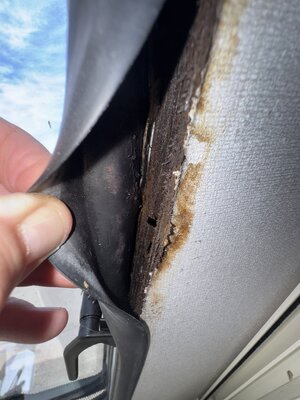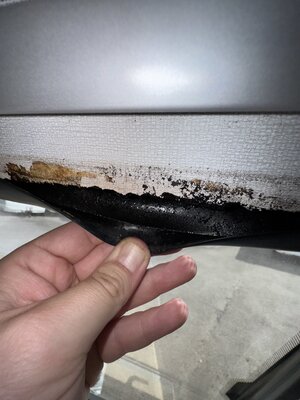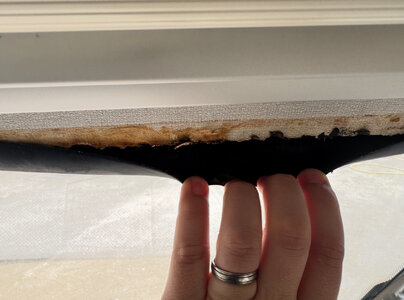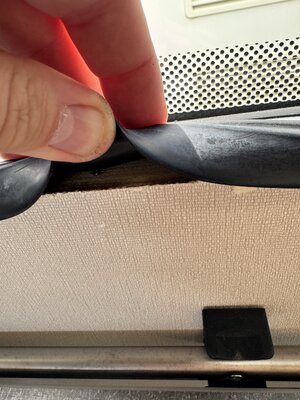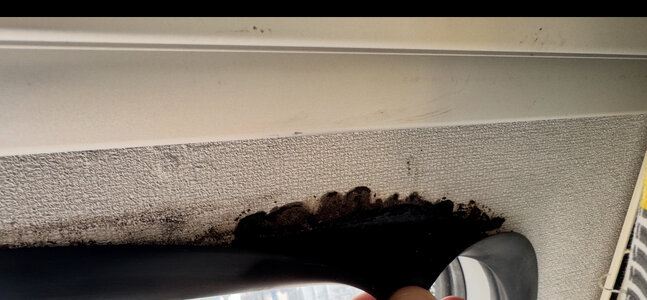Hello everyone.
Please move if in the wrong section.
I posted my first post late last year, seeking advice for tow cars with the aim to buy my first used van.
Flash forward now, those who remember the thread, I still haven’t changed car or bought a van!
Appreciating it’s a big purchase, I continued my journey around the country to identify the best layout and size and finances re the first time buy and getting into it.
As a result, I have finally, in the past two weeks, decided a smaller Xplore 304, as a starter van would suit. Given there’s three of us including a two year olds, and really needed a side dinette for bunks/fixed bunks.
I’ve spent considerable amount of time weighing the pros and cons of going bigger from the start but decided to keep it smaller for now, and believe I have exhausted all the possible vans I can, the only similiar ones being the caravelair 406 and the weinsburg 400, which I removed from my choice for numerous reasons on both.
Now today, 23rd May 2025, I have visited a used
Xplore 304 2020 model, and I’m well aware from this forum and others that the Xplore/Elddis has mixed reviews and some people wouldn’t go near, however given the volume sold, there has to be one which will survive the next few years!
However… saying that, despite the dealer assuring me it’s no damp, and perfect condition, when left alone with the van on the front window I was able to locate between the seals, a considerable amount of black moulding, staining, marks etc. I’ve attached photographs.
In addition to this. If pressed hard on the panneling, I could have put my entire hand through the wood near the window.
As a first time buyer from reading the internet the thought of damp keeps me up at night as it’s the first thing people note.
The rest of the van appeared fine, with other window seals being clean and the wood appearing clean and strong.
Now I appreciate this is quite long, but I’m assuming, and don’t want to sound like an idiot here, but this van is a hard pass? as it’s clearly evidencing damp/wetness which would be a considerable expense to repair?
And with that, moving forward, again not wishing to sound like an idiot, but all vans should be 100% clear of this type of black marking / moulding as evidenced in my attached photo, like some of the seals on the van are fine.
Any other advice on what to look out for that I can see my self for any type of van will be handy! I’ve actually got another Xplore 304 albeit a 2018 model this time on a refundable deposit until I view it in a few weeks . So two years younger than this wet van! Hoping that I don’t discover the same or find anything else.
Thanks for the advice
Please move if in the wrong section.
I posted my first post late last year, seeking advice for tow cars with the aim to buy my first used van.
Flash forward now, those who remember the thread, I still haven’t changed car or bought a van!
Appreciating it’s a big purchase, I continued my journey around the country to identify the best layout and size and finances re the first time buy and getting into it.
As a result, I have finally, in the past two weeks, decided a smaller Xplore 304, as a starter van would suit. Given there’s three of us including a two year olds, and really needed a side dinette for bunks/fixed bunks.
I’ve spent considerable amount of time weighing the pros and cons of going bigger from the start but decided to keep it smaller for now, and believe I have exhausted all the possible vans I can, the only similiar ones being the caravelair 406 and the weinsburg 400, which I removed from my choice for numerous reasons on both.
Now today, 23rd May 2025, I have visited a used
Xplore 304 2020 model, and I’m well aware from this forum and others that the Xplore/Elddis has mixed reviews and some people wouldn’t go near, however given the volume sold, there has to be one which will survive the next few years!
However… saying that, despite the dealer assuring me it’s no damp, and perfect condition, when left alone with the van on the front window I was able to locate between the seals, a considerable amount of black moulding, staining, marks etc. I’ve attached photographs.
In addition to this. If pressed hard on the panneling, I could have put my entire hand through the wood near the window.
As a first time buyer from reading the internet the thought of damp keeps me up at night as it’s the first thing people note.
The rest of the van appeared fine, with other window seals being clean and the wood appearing clean and strong.
Now I appreciate this is quite long, but I’m assuming, and don’t want to sound like an idiot here, but this van is a hard pass? as it’s clearly evidencing damp/wetness which would be a considerable expense to repair?
And with that, moving forward, again not wishing to sound like an idiot, but all vans should be 100% clear of this type of black marking / moulding as evidenced in my attached photo, like some of the seals on the van are fine.
Any other advice on what to look out for that I can see my self for any type of van will be handy! I’ve actually got another Xplore 304 albeit a 2018 model this time on a refundable deposit until I view it in a few weeks . So two years younger than this wet van! Hoping that I don’t discover the same or find anything else.
Thanks for the advice

